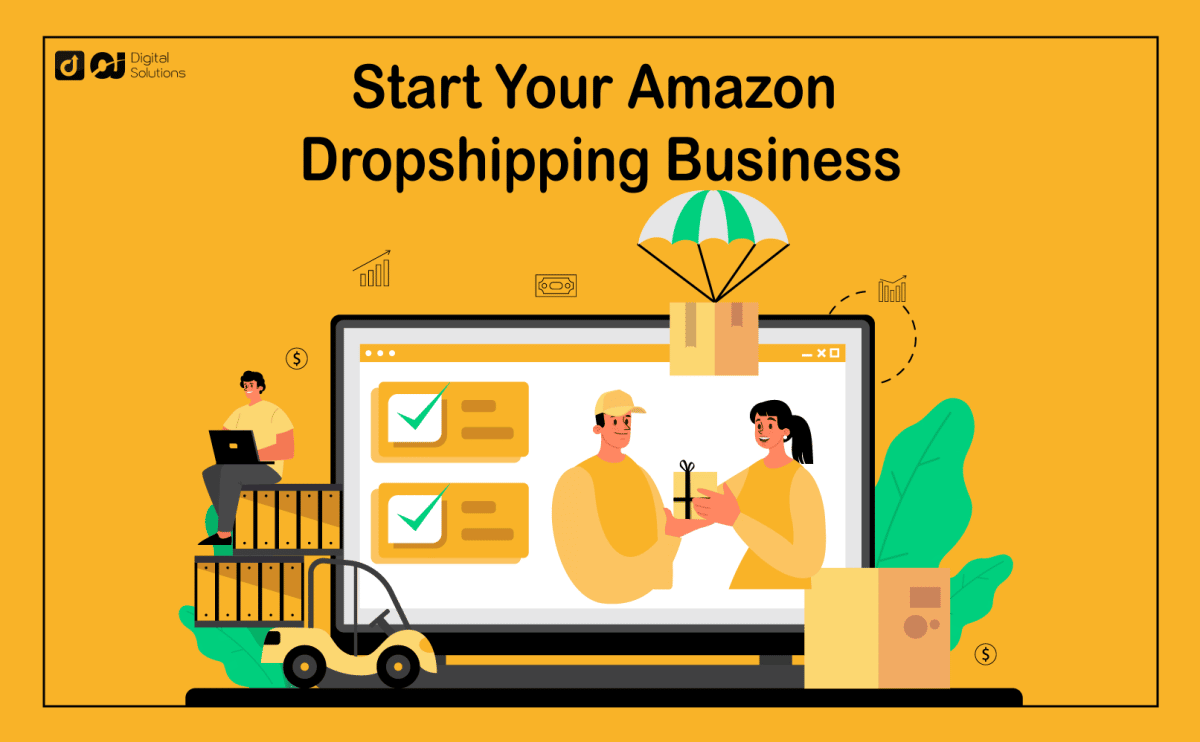Amazon ecommerce and dropshipping are two of today’s most prominent online selling trends.
You can combine these two powerful strategies with an Amazon dropshipping business.
Fortunately, I can help you.
I’ll give you a comprehensive look at this business model with this Amazon dropshipping guide. You’ll also learn all the steps and best practices about Amazon dropshipping for beginners..
Let’s begin.
Is Amazon Dropshipping Legal? (+Recent Updates to Amazon Dropshipping Policies)
Is dropshipping allowed on Amazon?
Definitely! Amazon dropshipping is a legitimate business. You won’t get into trouble by dropshipping through Amazon.
However, you must fully understand Amazon’s policies regarding dropshipping.
| AMAZON POLICY | EXPLANATION |
|---|---|
| You must be the seller on record, packing slips, external packaging, and selling information. | When the customer receives the item, there should be no hints pointing to your supplier or manufacturer. |
| You must personally accept and process customer returns. | You must set your own address as the return address. |
| You must comply with Amazon’s terms, policies, and seller agreement. | Amazon’s set of rules apply to every seller, including dropshippers. |
These policies can get a bit tricky for dropshippers. For one, you can’t manually order from sites like AliExpress and other online marketplaces without making the seller replace their information with yours.
You must work with the supplier to remove any mention of their business name when shipping out orders to your customers.
Nevertheless, you’re in the clear as long as you adhere to this strict rule.
What Is Dropshipping on Amazon, and How Does Amazon Dropshipping Work?
Dropshipping is a business model wherein you outsource the production and order fulfillment to a manufacturer or distributor. You act as the middleman between the customer and the product supplier.
You’ll still have to source profitable products, create listings, and maintain your Amazon store. You must also handle customer service, as you’re the buyer’s only point of contact.
From here on, your supplier handles everything from packaging to delivery. As a dropshipper, you also don’t have to manage inventory.
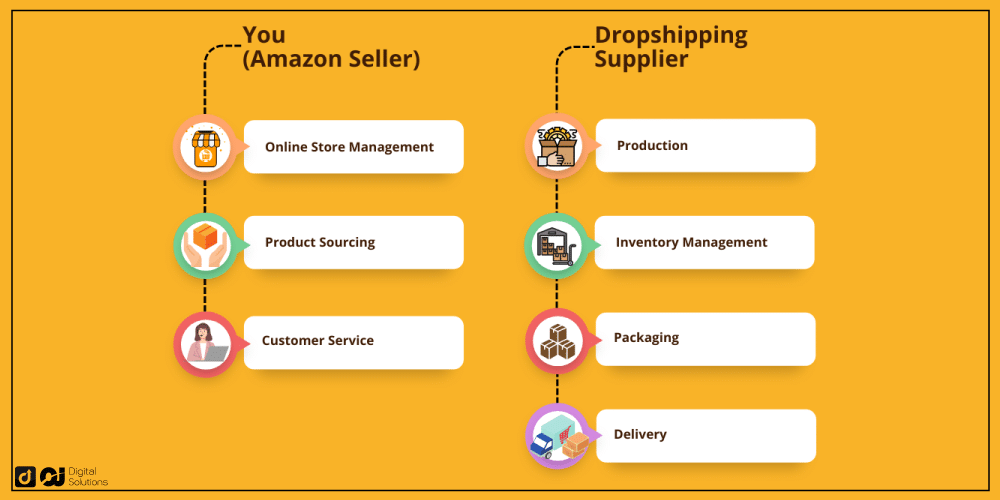
This method streamlines the selling process, allowing you to focus on building your brand and marketing your products.
Once you’ve established your dropshipping shop, here’s how it typically goes:
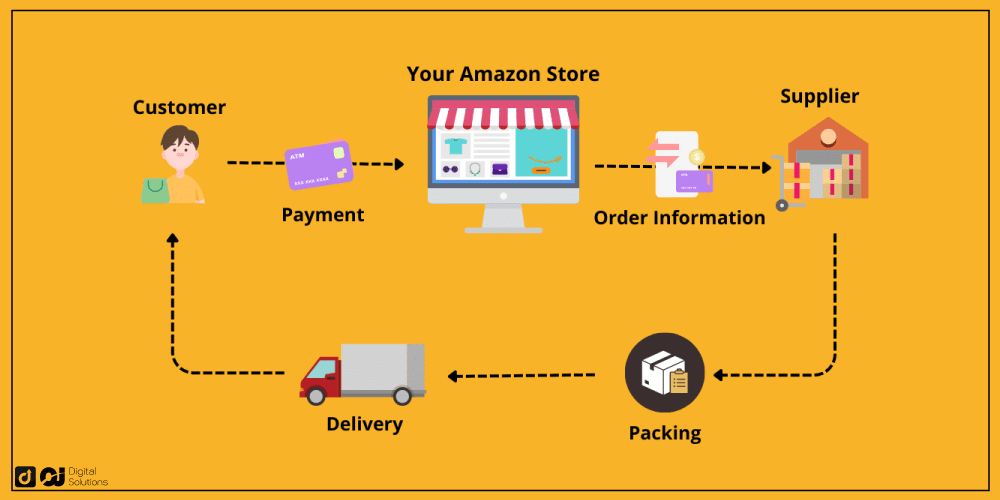
A customer purchases from your online store.
You forward the order to the supplier and provide the customer’s information.
The supplier ships the product to the customer.
How To Dropship on Amazon in Different Ways
Traditional
Traditional dropshipping involves sourcing products from other retail or wholesale websites and listing them in your Amazon store. The customer typically doesn’t know their order comes from a third party, as you have your arrangement with the supplier.
Print-on-Demand
With print-on-demand companies, you can offer printed merchandise without handling inventory.
This method lets you select from a supplier’s product offering, such as t-shirts, mugs, phone cases, home decor, and more. You then create a design to apply to these products.
When you receive an order, the POD supplier prints your design on the chosen product and then ships it to your customer.
It’s a more hands-on approach as you must supply the design. However, you can also outsource this task to a designer.
Private Label
This business model involves working with a manufacturer or supplier to develop a product under your brand. Aside from production, the manufacturer also handles the shipping.
Private labeling allows for more control and customization regarding the quality, packaging, and branding.
Fulfillment by Amazon (FBA)
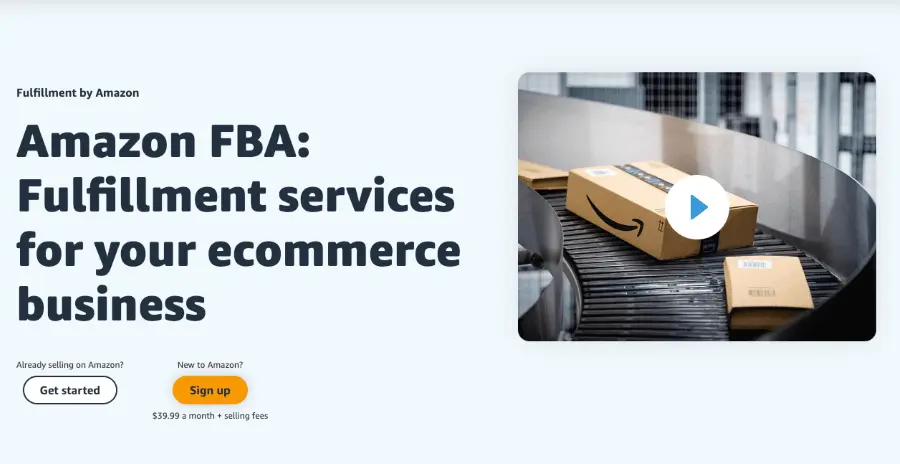
When you sign up on Amazon, you must choose between Fulfillment by Merchant (FBM) or Fulfillment by Amazon (FBA). The former lets sellers handle the packing and shipping process, while the latter is perfect for dropshipping.
It requires an additional step for you, though. You must first facilitate the delivery of your products from the supplier to Amazon fulfillment centers. Usually, the supplier handles sending products directly to Amazon’s fulfillment centers. They may use trucking companies that are enrolled in Amazon Relay to do that effectively.
With this method of drop shipping, Amazon FBA takes care of the picking, packing, and shipping.
The platform also handles customer service, so you won’t have to worry about anything else after your products arrive at the warehouse.
Amazon Dropshipping Pros and Cons: Is It the Best for You?
Before engaging with Amazon dropshipping, let’s review the benefits to see if they align with your business needs and goals.
I’ll also detail the possible challenges of this model so you can stay aware and mitigate the associated risks.
| ✅ PROS | ❌ CONS |
|---|---|
| Low-Risk | Modest Profit Margins |
| Low Startup and Operations Cost | Risk of Getting Banned |
| Quick and Easy Setup | High Competition |
| Fully Automated | Lack of Control |
| Wide Customer Reach | Customer Service Challenges |
Benefits of Amazon Dropshipping
Low-Risk
Amazon dropshipping has relatively lower risks compared to traditional retail models. As a dropshipper, you don’t have to invest in stocks upfront, reducing the risk of unsold products or inventory management issues.
You only pay for the products after receiving customer orders, mitigating the risk of excess inventory or financial loss.
Low Startup and Operations Cost
Dropshipping is an economical option because you don’t have to buy products upfront and pay for other costs, such as:
Warehouse rent and fees
Fulfillment infrastructure
Operational expenses
You’ll only need the basic costs to start dropshipping on Amazon, which are as follows:
Amazon selling plan
Subscription to a supplier platform (depending on your chosen supplier)
Product samples (if applicable)
Quick and Easy Setup
Amazon is a user-friendly platform that allows you to set up your dropshipping business quickly. You only need to provide a few documents, and you can start listing products immediately.
You don’t need technical knowledge or experience to sell on Amazon.
Fully Automated
An automated business model runs even when you’re not spending time on it — like dropshipping businesses. You can instead focus on marketing, customer service, and growing your business.
Wide Customer Reach
Amazon gives you access to its over 300 million active users. Dropshipping on this platform allows you to reach potential customers who trust and frequently purchase from the site.
Leveraging this advantage can help you get increased sales and business growth quickly.
Drawbacks of Amazon Dropshipping
Modest Amazon Dropshipping Margins
You can’t impose high markups due to intense competition and price-undercutting practices. Amazon fees, commissions, and ads can also eat into profits, making it challenging to achieve significant income.
Risk of Getting Banned
Amazon has strict policies about dropshipping. If you violate these policies or receive negative customer feedback, you risk suspension or banning from the platform.
High Competition
Amazon is a highly competitive marketplace with numerous Amazon stores offering similar products. It can be challenging to stand out and attract customers, especially in a dropshipping business where you have limited control over your products.
Lack of Control
You don’t have much control over the supply chain, such as product quality, branding, packaging, and shipping. This lack of control can lead to issues with order fulfillment, shipping delays, or potential damage to the brand’s reputation.
Customer Service Challenges
Dropshippers may face difficulties providing excellent customer service due to limited control over the product fulfillment process.
You can only rely on the information from the supplier to answer your customer’s inquiries. Any supplier errors or issues with product quality, returns, or delivery can also be more challenging to resolve.
How Much Does it Cost To Dropship on Amazon?
The associated costs of dropshipping on Amazon can vary depending on several factors, such as the following.
Amazon Seller Account
Amazon has two seller accounts:
Individual – $0.99 per unit sold
This account lets you start selling on Amazon without any upfront costs. However, you must pay for every item sold.
Professional – $39.99 monthly
With a Professional seller account, you only have to pay a monthly subscription fee. You don’t have to pay another fee for every item sold, regardless of how many you sell in a month.
Amazon Fees
Referral Fees
Amazon charges a fee for every successful sale. The minimum referral fee is $0.30, but it can also be a percentage of the total price, whichever is greater.
In general, referral fees range from 8% to 20%, depending on the category.
Amazon FBA
If you’re dropshipping through FBA, you must pay a fulfillment fee to cover the costs of picking, packing, shipping, handling, customer service, and product returns.
The price per unit depends on the weight and dimensions of the package. It also varies based on the product type.
You may also pay for storage, aged inventory, and removal orders.
Other Costs
You must also note any other additional fees that may apply to your products. Amazon may charge rental book service, refund administration, and high-volume listing fees.
Review the breakdown of Amazon’s fees to see your expected expenses.
Marketing and Advertising
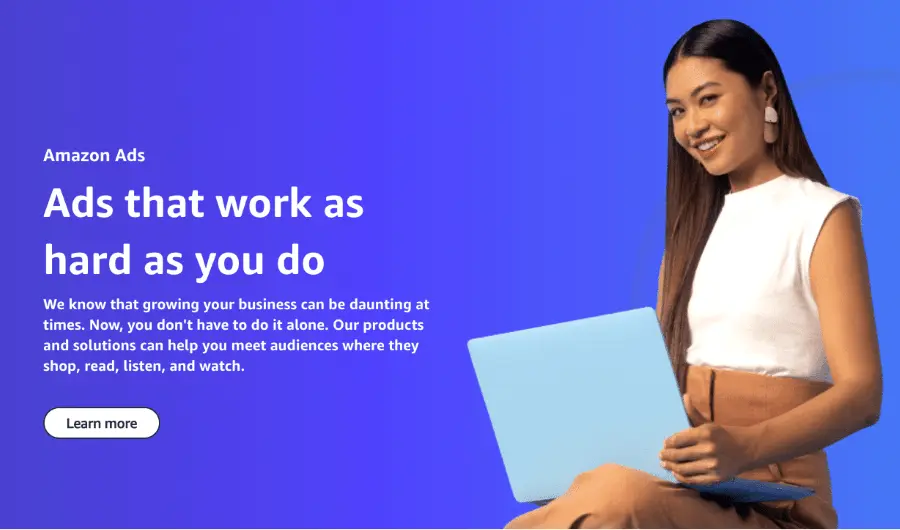
This is an optional cost, as you don’t have to participate in Amazon’s advertising program if it doesn’t fit your business needs.
If you do, however, you must prepare a budget for advertising. Amazon Ads lets you set the maximum amount you want to pay, so you don’t have to exceed your budget.
Amazon Ads operates on a cost-per-click model with auction-based pricing. The exact price depends on the competition, the bid, and your budget.
Supplier Platform
You can always source your products from a free marketplace. However, some dropship suppliers charge a subscription fee to gain access to their platforms.
You must pay the corresponding fees if you choose a paid supplier platform. I’ll talk more about prices and suppliers later.
But here’s a list of the best dropshipping suppliers for Amazon.
Is Amazon Dropshipping Profitable?
Yes, Amazon dropshipping can be a highly profitable venture.
However, it depends on your products and effort.
Dropshipping margins are typically 15% to 30% of your selling price. Considering Amazon will take 15% or even more, you must ensure a positive net income after every drop-shipping sale.
If your product profit margins are 30%, you’ll still have 15% of net revenue after Amazon charges you its fees.
Your product’s demand will also affect your business’s profitability. In-demand products naturally mean more sales and higher profits.
You’ll also have to develop a great marketing strategy (which I’ll discuss later in the article).
How To Start a Dropshipping Business on Amazon in 8 Steps
Here’s a comprehensive guide on how to become a dropshipper on Amazon.
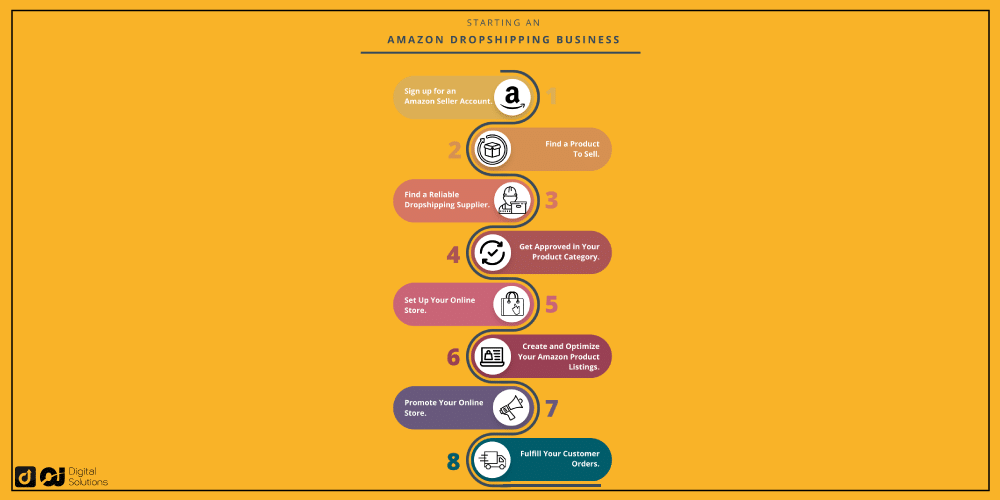
1. Sign Up for an Amazon Seller Account.
First, prepare the following documents to ensure a smooth process:
Business email address or Amazon customer account
International credit card
Government ID
Tax information
Phone number
Bank account (for receiving your Amazon earnings.

Once you have everything Amazon requires, click the Sign-Up button on Amazon Seller Central.
Required Information
Over the course of the sign-up process, you must provide the following details:
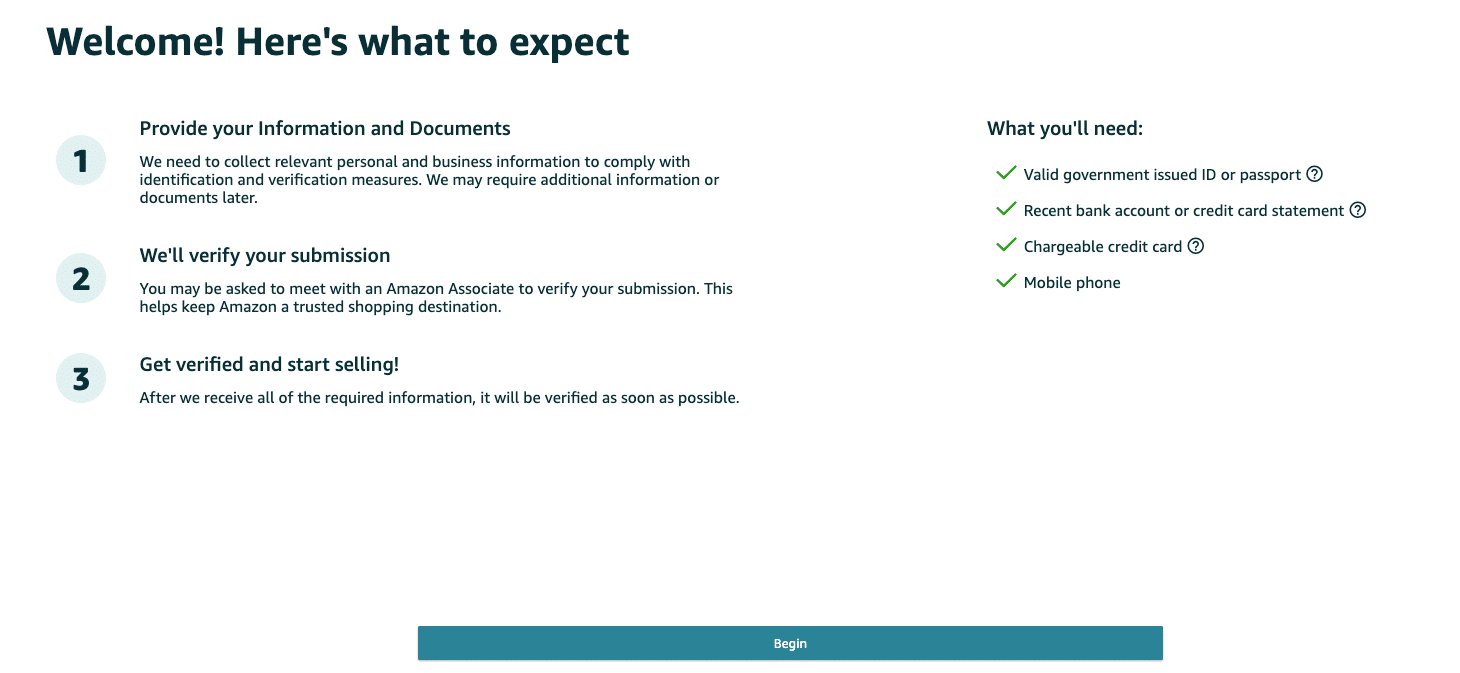
Personal information
Business location and type
Billing information
Store and product details
Verification Process
To verify your identity, Amazon will ask you to upload a photo of your government-issued ID. It should have the same name as your credit card or banking information.
For Professional sellers, you may also have to attend a video verification call.
Don’t worry, you only have to show up and show the original copies of your documents. These should be the same ones you used upon registration.
Selling Plans
As mentioned, Amazon has two selling plans: Individual and Professional.
The Individual account makes sense if you want to test the market first. You only have to pay after a successful sale.
However, the fee will eat into your profits by the time you make at least 41 sales a month, which will incur a $40.59 charge.
At this point, the Professional selling plan is cheaper. You only have to pay $39.99 regardless of how many orders you get in a month.
Aside from the pricing, it has other benefits, such as:
Buy Box
Amazon Advertising and Promotional Tools
Bulk Listing
Access to Locked Categories
For a dropshipping business model, I recommend a Professional selling account. However, you have to pay the fee upfront.
2. Find a Product To Sell.
To be a successful dropshipper, you must sell products with decent profitability and a high demand on Amazon.
The 5 Criteria of a Winning Amazon Dropshipping Product

Demand
If you want to rely on Amazon’s traffic to get sales, you must cater to the audience’s needs and preferences.Before you list a product, check the sales volumes on competitor shops and see if users are searching for it. A consistent demand helps ensure a steady flow of potential customers.
Competition
It’s best to avoid oversaturated markets with several sellers offering the same products. Find gaps in the market or niches with moderate competition.Profitability
After subtracting all the fees and expenses, how much profit will you make?Purchase products that can generate sufficient profits corresponding with the demand. Don’t overlook items with thin profit margins but with a high potential for bulk and repeat purchases.
If you can, work with wholesale suppliers so you can take advantage of wholesale price.
Quality
To ensure long-term success, look for products with high quality. Check the reviews and ratings, or order a sample to evaluate it in person.Sales Rank
Always check the product’s sales rank on Amazon to assess its demand. A consistent and good rank indicates a generally sustainable market acceptance.
What Products To Avoid
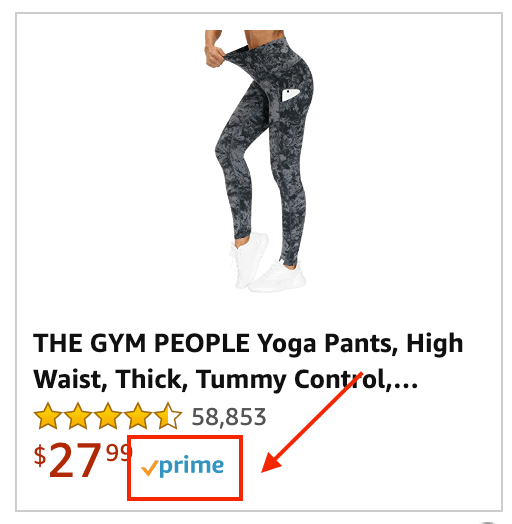
Prime Products
Products available through Amazon Prime shipping means they’re from an FBA seller. I don’t recommend them for beginners because of the extremely tough competition.Obscure Products
Although a unique product helps you stand out, it’s useless if Amazon users aren’t the right target for it.I recommend setting up another online store to dropship a particularly innovative product. This way, you have more marketing freedom to reach the right audience.
Restricted Items
Review Amazon’s restricted and prohibited products carefully to avoid getting into trouble with the platform. You can’t usually sell alcohol, animals, automotive, stocks, paper money, and more.
Product Research Methods (Free and Paid)
Now that you know what characteristics to look for in a winning dropshipping product, I’ll teach you how to find them.
You can utilize both free and paid services for your product research. Here’s a quick overview of my trusted platforms:
| Pricing | Features | ||
|---|---|---|---|
| Amazon Bestsellers | Free | – Most popular products across the platform | Try It Out |
| AliExpress Dropshipping Center | Free | – Find Products To Sell section – Product Analysis | Try It Out |
| Jungle Scout Opportunity Finder | Starts at $49/month | – Niche score – Historical keyword data | Try It Out |
| Helium 10 Black Box | Starts at $29/month | – Various custom search filters – 450+ million Amazon product database | Try It Out |
| AutoDS Winning Products Hub | Starts at $12.90/month | – Handpicked best-sellers for dropshipping – Detailed product analysis | Try It Out |
Amazon Best Sellers
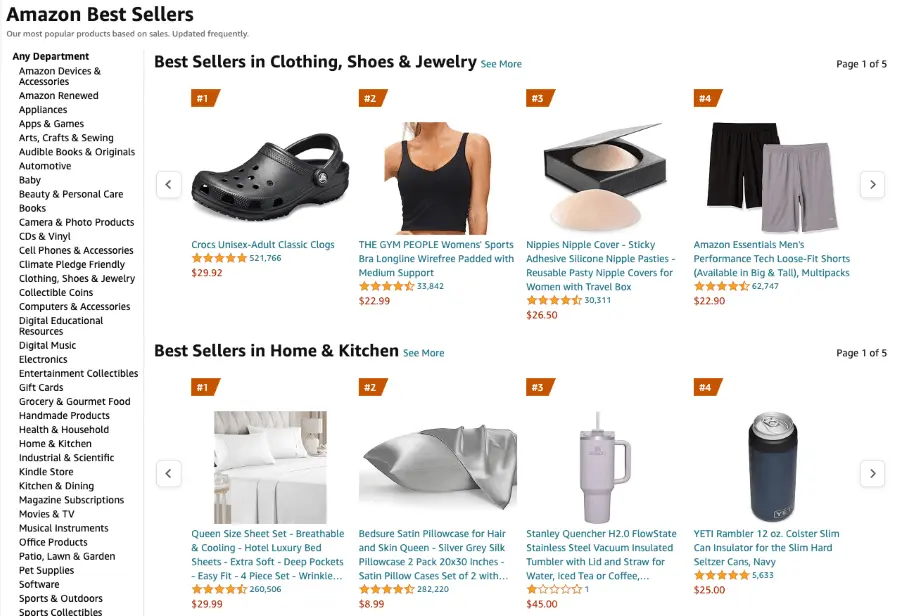
Amazon has a list of the top-selling items in various categories. The Best Sellers page will show you high-performing product ideas based on the sales volume.
AliExpress Drop
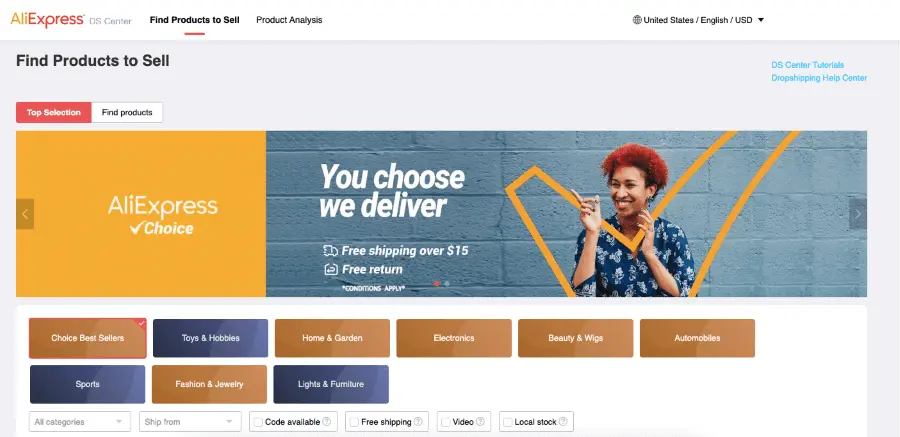
Shipping Center
AliExpress has launched a free tool to help dropshippers find the best products on the platform. You can search products by sales volume, rating, and performance. It also provides additional information, like the growth rate and seller ratings.
Jungle Scout Opportunity Finder
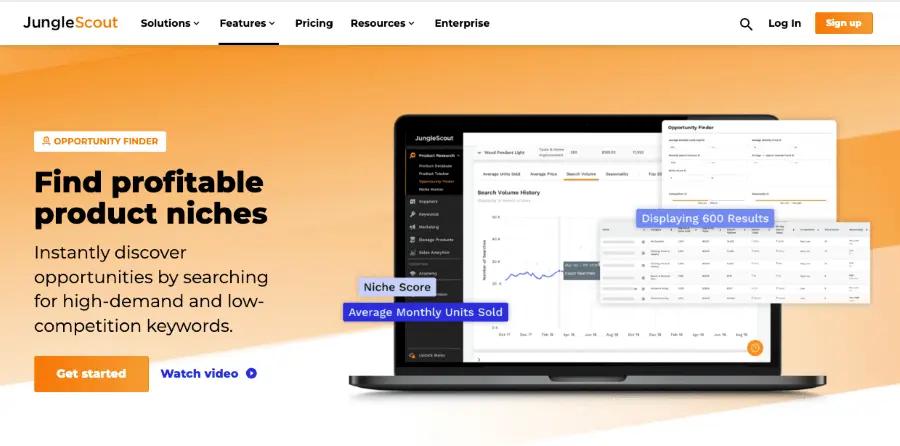
The Opportunity Finder tool helps you find high-demand, low-competition products by adjusting the search filters according to the number of sales per month, price, competition level, and niche score.
Helium10 Black Box
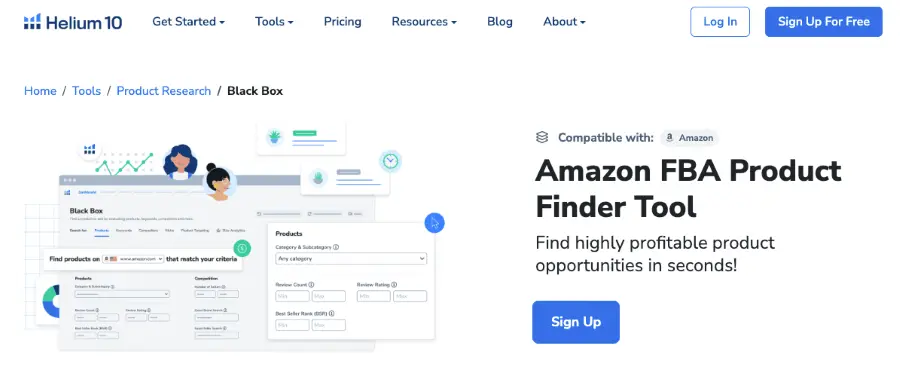
Black Box is an Amazon FBA Product Finder tool that lets you find ideas in its database of over 450 million listings. You can search by category, monthly sales revenue, price, rating, and more.
AutoDS Winning Products Hub
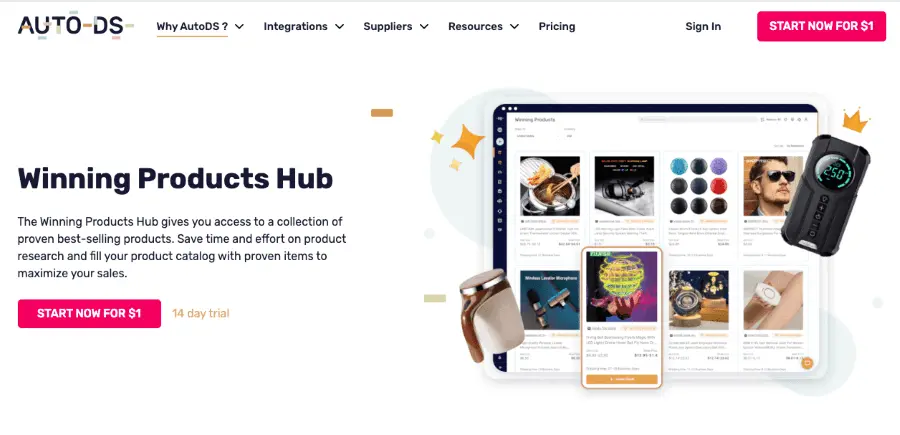
The Winning Products Hub shows you how much sales and profits other sellers are making from a particular product. It also provides information like the sellers’ ads and suppliers.
3. Find a Reliable Dropship Supplier for Amazon.
Once you have a winning product, look for a supplier that can help you offer it to your customers.
Ideally, the supplier specializes in the product you want to sell. However, you must consider other factors to find the best partner.
Key Characteristics of a Good Amazon Dropshipping Supplier
When selecting a dropshipping supplier, look for these signs:
Reputable
Quality product offerings
Good customer service
Consistent product and service quality
Fast shipping
Multiple payment options
Scalable
I’d recommend working with multiple suppliers, so you have an alternative to fall back on if your main business partner runs out of stock of a particular item. Doing this also provides a chance to offer a wider selection of products to appeal to a wider audience.
Best Amazon Dropshipping Suppliers
I compiled some information on the best dropshipping suppliers below (plus what I like about them) to make it easier for you.
| Supplier | Pricing | Location | Best Features |
|---|---|---|---|
| AliExpress | Free | China | – Vast retail product selection and variety – No minimum order requirements |
| Alibaba | Free | China | – Extensive network of wholesale suppliers – Private labeling |
| Spocket | $0 to $99.99 per month | US/EU | – High-Ranking products – Fast delivery |
| SaleHoo | $67 annually or $127 for lifetime access | New Zealand | – Pre-vetted 8,000+ suppliers – Unlimited 1:1 support |
| Wiio | Free | China | – Automated order fulfillment and tracking – Quality control and product inspection |
| CJdropshipping | Free | China | – Print-on-demand services – Custom branding |
| JungleScout | $49 to $129 per month | US | – All-in-one Amazon seller platform – Extensive data and metrics |
| ZonGuru | $49 to $79 per month | US | – Comprehensive suite of Amazon seller tools – Amazon analytics |
| Gelato | $0 to $99 per month | Worldwide | – Print-on-demand services – Global network of printing suppliers |
| Modalyst | $0 to $90 per month | US/EU | – Automated inventory and price syncing – Express shipping options |
| 01Supply | $0 to $49 per month | Worldwide | – Sustainable – Handmade products with local production |
| HyperSKU | Free | China | – Express worldwide shipping – Packaging customization – Private labeling |
Product Samples
This step is optional but I highly recommend it.
Ordering samples can help you assess the quality first-hand. You can also use this opportunity to take better and branded photography.
Having a sample on-hand also allows you to answer some customer inquiries that may not be available from the supplier.
4. Get Approved in Your Product Category (If Applicable).
I generally don’t recommend choosing a category that requires Amazon’s approval. However, it’s up to you.
The most common categories requiring prior Amazon authorization include fashion, beauty, and jewelry.
Note: If you find a potentially lucrative opportunity with no competition in a locked category, check if it’s a patterned product first. If this is the case, you can’t legally sell it.
5. Set up Your Online Store.
To further increase your reach and sales potential, you must have your own online store while retaining your Amazon sales channel.
However, this step requires you to maintain a website, which might not be easily achievable for beginners. Nevertheless, I’ll teach you a simple way to grow your dropshipping business.
Choose Your Hosting Plan.
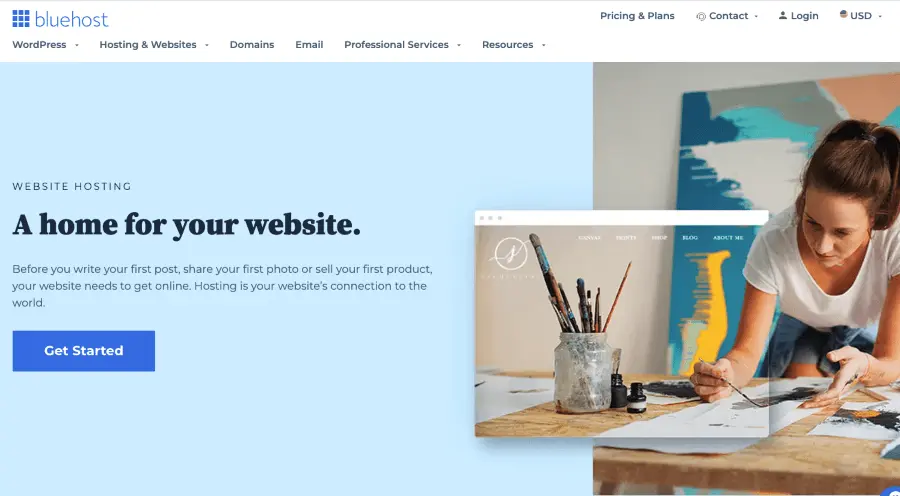
First, choose where you want to host your website. Select a hosting provider that offers reliable services and suits your budget.
I recommend using Bluehost or HostGator. These services currently offer the best value for money in the market.
Select an Ecommerce Platform.
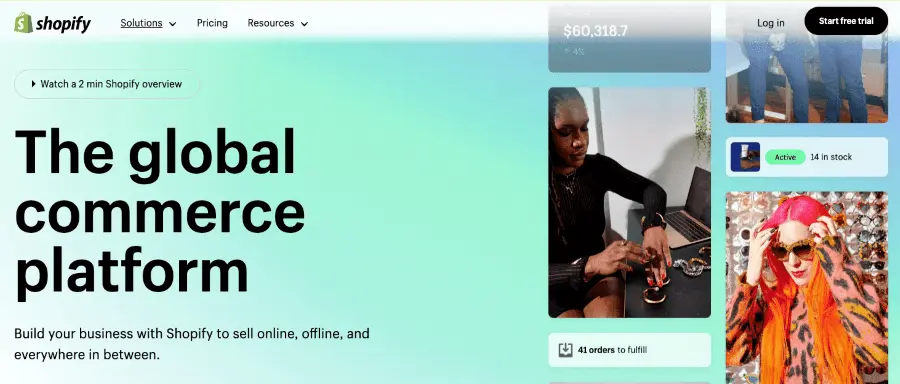
Opt for an ecommerce platform with the necessary features for your online store.
I highly recommend Shopify due to its user-friendly interface, extensive customization options, and seamless integration with various marketplaces, including Amazon.
Build Your Store.
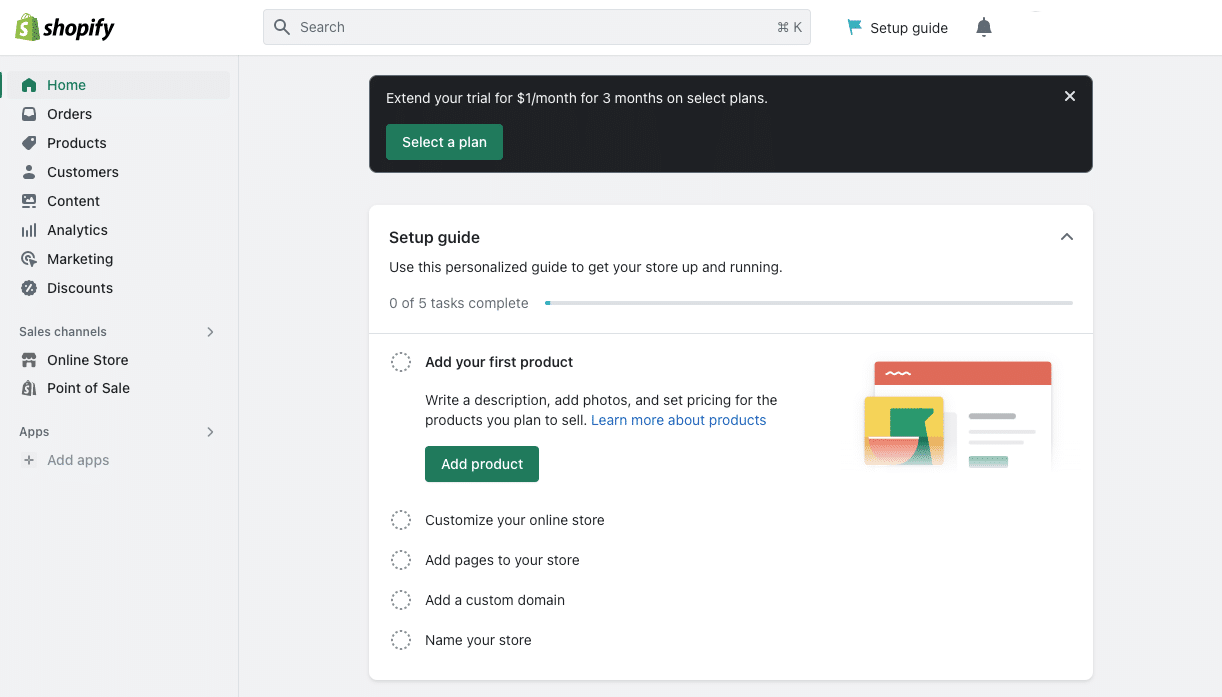
Create your online store using the chosen ecommerce platform. Customize the design, layout, and branding elements to align with your business identity.
If you’re using Shopify, these steps will get you started:
Select a theme for your Shopify store. You can use a free one or buy it if you want a more unique and professional aesthetic.
Incorporate essential pages such as the homepage, about page, and contact page.
Set up your terms and policies, and create a page.
Answer some frequently asked questions in a dedicated FAQs page.
Set up your tax and shipping settings.
Install secure payment gateways.
Connect Your Amazon Account to Your Online Store.
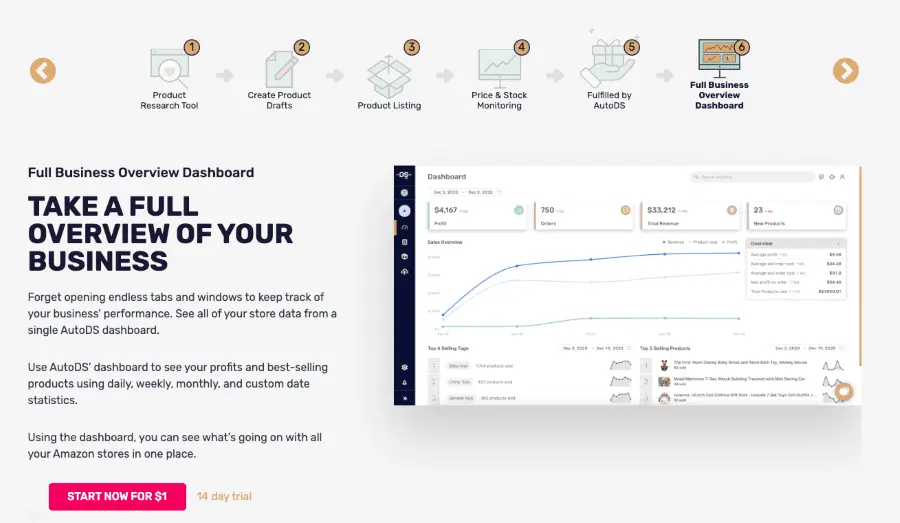
Integrating your Amazon shop to your online store allows for seamless synchronization of products, inventory, and order management.
You can connect Shopify to Amazon using built-in integration or third-party apps, such as:
AutoDS
Amazon by Codisto
FBA Shipping by ByteStand
Amazon Integration Plus by Common-Services
Amazon by CedCommerce
6. Create and Optimize Your Amazon Product Listing.
Amazon’s search engine uses a sophisticated algorithm that matches a searcher’s query with the most relevant listings.
To assess the relevancy, it uses a combination of the following metrics:
Keywords
Sales volume
Reviews
Returns
Seller performance
And more
For this part, let’s focus on keywords. The rest will follow as you run your shop.
The right keywords will help you improve your visibility on Amazon’s search results page and reach your target audience.
Research Keywords for Your Amazon Product Listing.
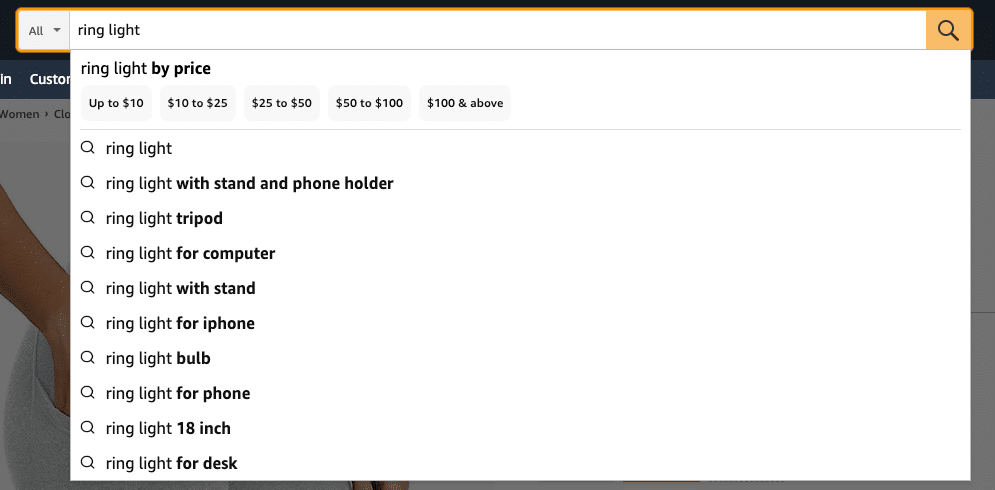
To determine the best keywords for your listings, you can do any or a combination of the following methods:
SEO Tools
I personally use Helium10 Magnet and Cerebro tools for our keyword research needs. These tools can provide valuable insights into the trending and high-performing keywords.
Amazon Search Bar
Type the most relevant keyword for your product and look at the suggestions – these are usually the words and phrases your audience uses.
Competitors
Get ideas by checking the existing products and your competitors’ shops. Look at their most popular listings and see what keywords they use in the title.Amazon SEO Experts
SEO is a lot of work, especially if you’re a beginner. If you want to skip all the extra work so you can focus on your business, you may want to leave it to the professionals.
If you want my team to do it for you, check out our Amazon listing optimization page.
What you’re looking for are keywords with the right balance of demand and competition. Ideally, you want high-demand, low-competition phrases but those are rare.
Low demand means there aren’t many users searching for the keyword, while high competition means you have lesser chances of outdoing your high-performing competitors on the SERP.
Create an Amazon Product Listing.
You can create a listing in two ways:
Add a new offer for a product that’s already in the Amazon marketplace.
Create a new listing detail page for a product not available on Amazon.
While creating a listing, ensure it aligns with Amazon’s guidelines to avoid getting banned or suppressed. Here are some important points to remember:
Your products must have a Global Trade Item Number (GTIN), like an ISBN, UPC, or EAN. You can purchase UPC codes before listing your product.shipi
You must apply for an exemption if your product doesn’t apply.
Images must at least be 500 x 500 pixels.
The product must take up at least 80% of the whole image.
The image must have a white background.
Every word in the product title must have a capitalized first letter.
The product must follow Amazon’s guidelines about restricted and prohibited content.
The product must not infringe on any intellectual property rights.
Optimize Your Amazon Product Listing.
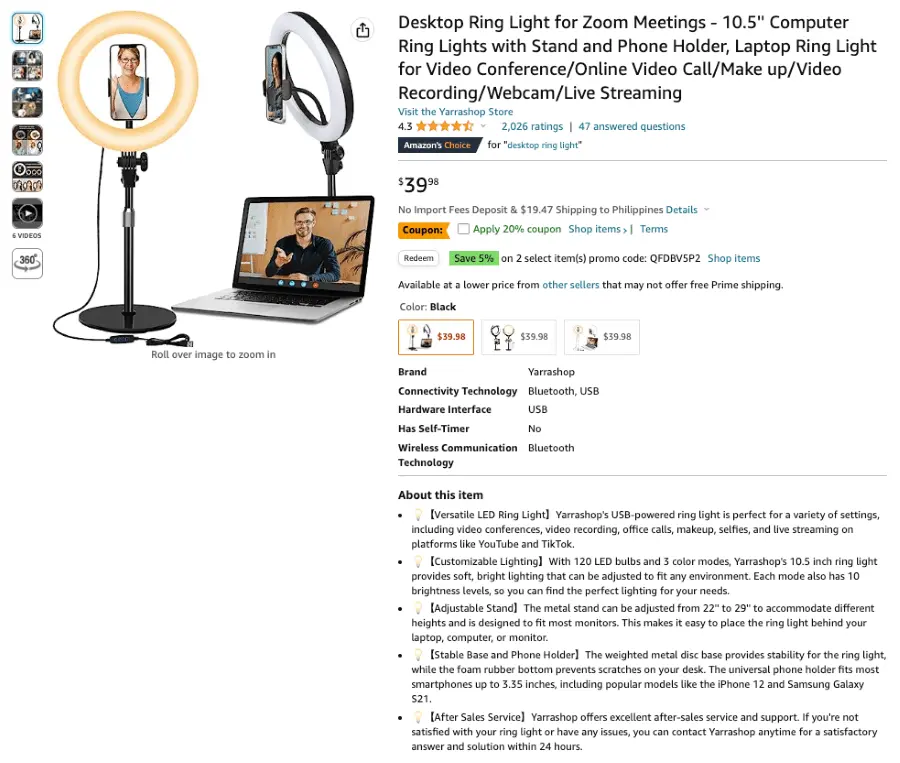
Once you have your keywords, insert them strategically in the following components:
Product Title
Take advantage of the allowed 200 characters for your product title. This lets you use the appropriate keywords and essential details as much as possible.
Be clear and concise. Include details like the quantity, size, and important features.Bullet Points
The bullet points allow you to highlight key product details. You can write up to five compelling features, such as the main benefit, product information, and some explanations about why buyers should buy your item.Product Description
This is the part where you can explain your product’s features in more detail. Incorporate keywords naturally while reiterating the benefits you mentioned in the bullet points.
Make use of all 2,000 characters, but ensure you write a product description with a good flow and readability.Product Images
Ecommerce product images are responsible for creating a great first impression. They will also provide visual details that a product description can’t offer, so ensure you upload multiple images showing the product in different angles and close-ups.Product Video
You can add a video to your Amazon listing to show more details, allowing your audience to visualize the product better. Ask your supplier if they have a video, or make a video using the product sample you ordered (if any).
Important: Many sellers skip this step, but I urge you not to make the same mistake.
If you don’t optimize your Amazon listings for conversion, you won’t go anywhere with your promotional activities. Even if you get many clicks and views, a poorly-optimized copy won’t turn your visitors into buyers.
Get Your First Reviews.
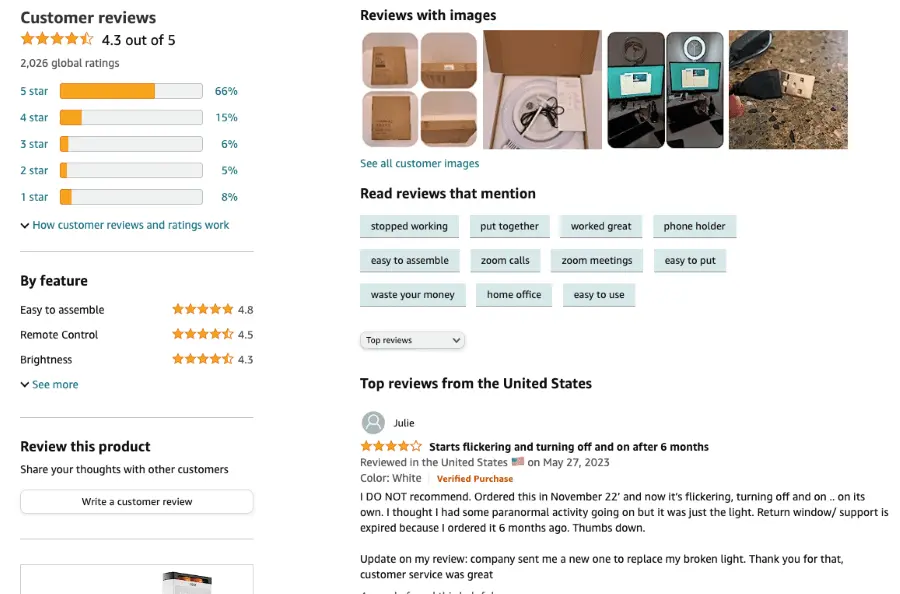
You must at least have three to five reviews to start to increase buyer confidence.
Ask your friends and family to get the ball rolling by ordering from you and leaving a positive review. Ensure they’re using different IP addresses.
7. Promote Your Online Store.
Once you have set up your store, it’s time to promote it on external platforms.
Define Your Target Audience.
Perform market research to find your target audience based on their:
Demographic
Interest
Buying behavior
Creating a profile of your ideal customers allow you to tailor your marketing strategies and increase the effectiveness of your promotions.
Select Promotion Channels: Where Does Your Audience Hang Out?
When researching your audience, determine the platforms they most often use. These sites are where you should set up an online presence to reach them.
Here’s a quick overview of the best promotion channels for Amazon dropshipping.
| Platform | User Demographics | Content Type | Best For |
|---|---|---|---|
| Over half of its users are between 18 to 34 years old | Text posts, photos, videos, and live streaming | Innovative or trending products | |
| Over half of its users are between 18 to 44 years old | Aesthetic images, stories, and reels | Innovative or trending products | |
| TikTok | Varied user base, from 10 to 49 years old | Short-form videos of skits, tutorials, dance challenges, and educational content | Innovative or trending products |
| Predominantly female user base between the ages of 18 and 44 | Aesthetic images, infographics, tutorials, and more | Products in the beauty, fashion, home decor, and kitchen categories | |
| YouTube | Predominantly 18 to 44 years old | Video tutorials, vlogs, reviews, and more | Practical products |
| Amazon PPC | Users searching and shopping on Amazon | Sponsored product ads, display ads, and video ads | Highly popular products on Amazon |
| Google Ads | Searchers across the Google Display Network | Search ads, display ads, video ads, app promotion ads, and more | High-intent, local, or specialized products |
| Influencers | Specific interest areas or communities | Images, blog posts, short- or long-form videos | Niche products |
I recommend picking one or two promotion channels to start. You don’t want to spread yourself too thin, and you must focus on your chosen platforms to fully maximize them.
8. Fulfill Your Customers’ Orders.
Depending on your chosen dropshipping platform, you can fulfill orders in three ways:
Manual Fulfillment
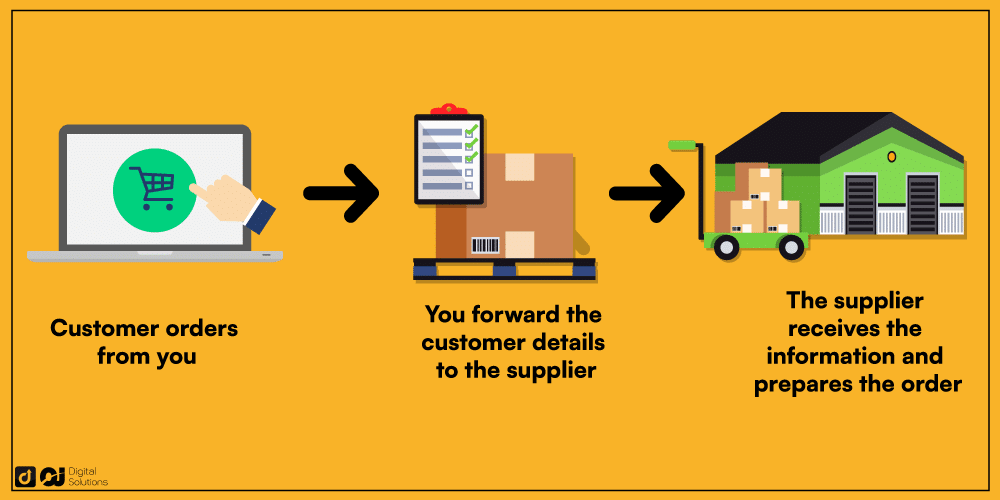
With this option, you must relay the customer’s order to the supplier manually.
The method depends on your internal agreement with your supplier. In many cases, you must order from their website by entering your customer’s information upon checkout.
Automated Fulfillment
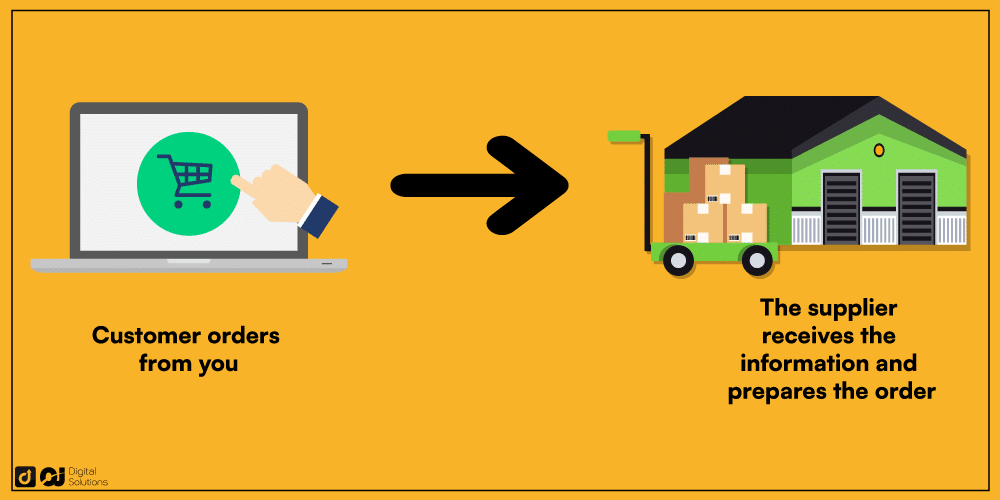
Some supplier platforms can integrate with your Amazon store to automate the whole process. You don’t have to lift a finger – the supplier does everything for you.
The order details directly go to the supplier, so they can start preparing the product right away.
Third-Party App
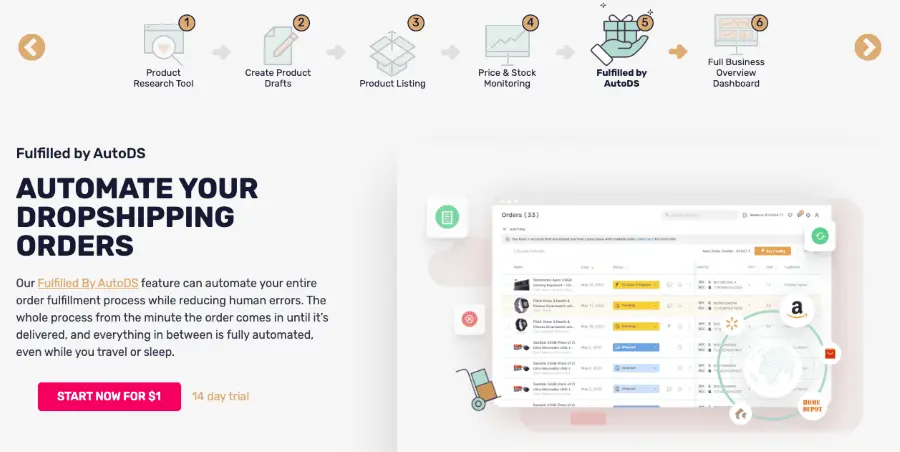
Even if you’re using manual fulfillment, you can eventually outsource this step by subscribing to a fulfillment app like AutoDS.
This platform can manage orders on Amazon and relay information to your supplier so you have more time on your hands. This also allows for fewer errors and less delays, ensuring customer satisfaction.
AutoDS also syncs your store inventory with the suppliers’ website. If anything changes, like the stock or pricing, the software automatically updates your listings on Amazon, preventing customer dissatisfaction and freeing you from having to monitor these things constantly.
7 Tips for Long-Term Amazon Dropshipping Success
Increase your chances of success with these tips.
1. Offer Coupons, Discounts, and Special Deals.
Offer coupons, discounts, and limited-time special deals to incentivize purchases and attract customers. Occasional deals can help drive sales and increase customer loyalty.
2. Win the Buy Box.
Amazon’s Buy Box is a prominent feature that appears on product detail pages, making it easier for customers to add items to their carts. Winning the Buy Box increases your visibility and chances of making a sale.
3. Provide Good Customer Service.
Deliver exceptional customer service to build a reputable dropshipping business and get positive reviews. Respond promptly to customer inquiries, and address any negative reviews and concerns professionally.
4. Manage User Feedback.
Encourage customers to leave feedback and reviews for your products. Respond to their positive reviews with your gratitude, and address negative feedback to improve your seller rating and credibility.
5. Build a Brand Outside of Amazon.
While Amazon is a powerful platform, you must build a brand presence beyond it. Establish your own website, social media accounts, and email marketing campaigns to engage with customers directly.
6. Monitor and Adapt.
Continuously monitor market trends, competition, and customer preferences. Stay updated with changes in the Amazon dropship policy and adapt your strategies accordingly.
By staying proactive and flexible, you can adjust your product offerings, pricing, and marketing tactics to stay ahead in the dynamic marketplace.
7. Maintain Accurate Financial Records.
Keep detailed and accurate records of your financial transactions, expenses, and profits. This helps you analyze your ecommerce business performance, track profitability, and ensure compliance with tax regulations.
Frequently Asked Questions (FAQs)
How Do I Handle Returns and Refunds When Dropshipping on Amazon?
When processing customer returns, you must not use your supplier’s address. You must set your own address as the return address.
Can I Sell Retail Arbitrage, Private Labeling Through Amazon Dropshipping?
Yes, you can sell both retail arbitrage and private label products with an Amazon dropshipping business model. Retail arbitrage involves finding products at retail stores and reselling them on Amazon, while private labeling involves creating your own branded products.
You can use Amazon FBA for both methods, allowing Amazon to handle inventory storage, shipping, and customer service on your behalf.
Can I Do Dropshipping With My Own eCommerce Store?
Yes, you can do dropshipping with your own eCommerce store then have an Amazon sales channel link to direct your customers to your Amazon store. Having your own online store allows you to gain a competitive advantage through more branding and marketing opportunities.
Is Shopify Better for Dropshipping?
Can You Dropship on Amazon with Your Own Products?
Yes. An Amazon seller dropshipping model that involves your own products must use the Fulfillment by Amazon service, so you don’t have to handle storage, packaging, and shipping orders.
What Is Amazon Drop Shipping vs. eBay Dropshipping?
Amazon dropshipping and eBay dropshipping use similar models. The main difference lies in the platforms themselves.
Amazon is known for its vast customer base, strong logistics network, and reputability. eBay, on the other hand, has a more auction-style format and allows for more flexibility in terms of purchasing products from a third-party supplier.
What Are Drop Restrictions at Amazon?
You must identify as the seller in the packing slips and external packaging materials.
You can’t order from an online retailer and have the retailer ship directly to the customer if the package contains their information and not yours.
When dropshipping products, you must still comply with the same set of seller agreement rules for all Amazon sellers.
The Bottom Line
I hope this guide has helped you learn how to start dropshipping on Amazon.
Amazon dropshipping can be a great business opportunity. You’ll need to put in a lot of work, including creating accounts, searching for products, and securing a business license.
Eventually, you could generate significant profit if you commit to building and promoting your online business.
Remember, it’s a continuous process. You can learn by staying updated on the recent market news and through an Amazon dropshipping course.

